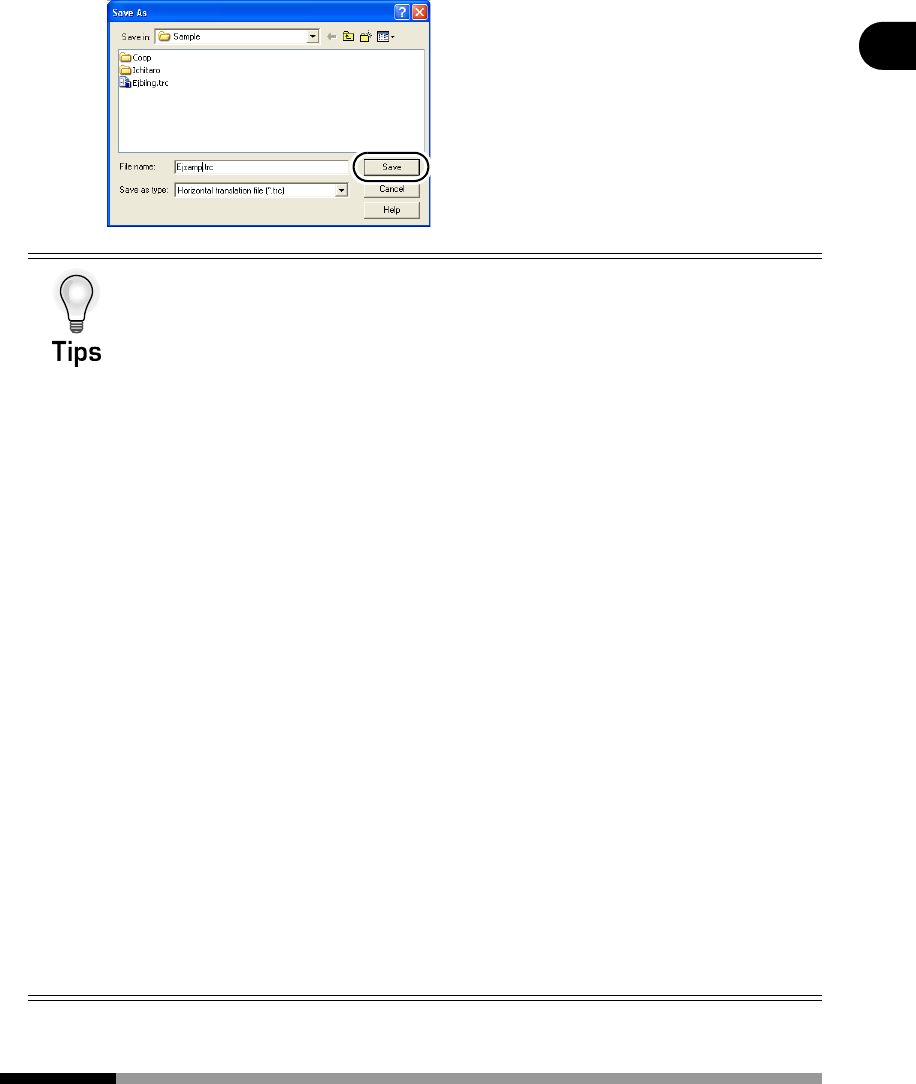
7
Translation by Comparing Original and Translated Text [Translation Editor]
Introduction
6
Specify the type of file and file name, then click the [Save] button.
Translation using <Translation Editor>
■ Translating all sentences [All Sentence Translation]
1
Open the file you wish to translate.
Loading a file from Windows Explorer
You can load a file from Windows Explorer. To do so, right-click a file on the
Windows Explorer, select [Send To] and then [ATLAS Translation Editor].
Also, you can drag and drop a file from Windows Explorer into the Translation
Editor.
Entering original text from the keyboard
You can input text directly in the Original text cells with the keyboard.
Pasting original text via clipboard
You can load documents created with other applications into the Translation Editor,
via the clipboard.
Check the translated text by re-translation
You can re-translate the translated text back to the original language by selecting
[Confirmation Translation] from the [Translation] menu.
Creating Translation Memory
You can store an edited and completed translation sentence as a translation
memory item to enable the reuse of translation data. For details, refer to "Utilizing
Translation Memory [Translation Memory]" on page 29.
Select the translation environment
You can select the translation environment used with the Translation Editor. For
details, refer to "1.4 Setting the Translation Environment [Translation Environment]"
in "Basics", on page 47.
Files the Translation Editor can Save
The Translation Editor can save the following types of files. For details, refer to "2.4
Saving the Translation Results" in "Basics", on page 57.
• Combined translation files (.trd)
• Horizontal translation files (.trc)
• Vertical translation files (.tra)
• Original files (.jpn / .eng)
• Text files (.txt)
